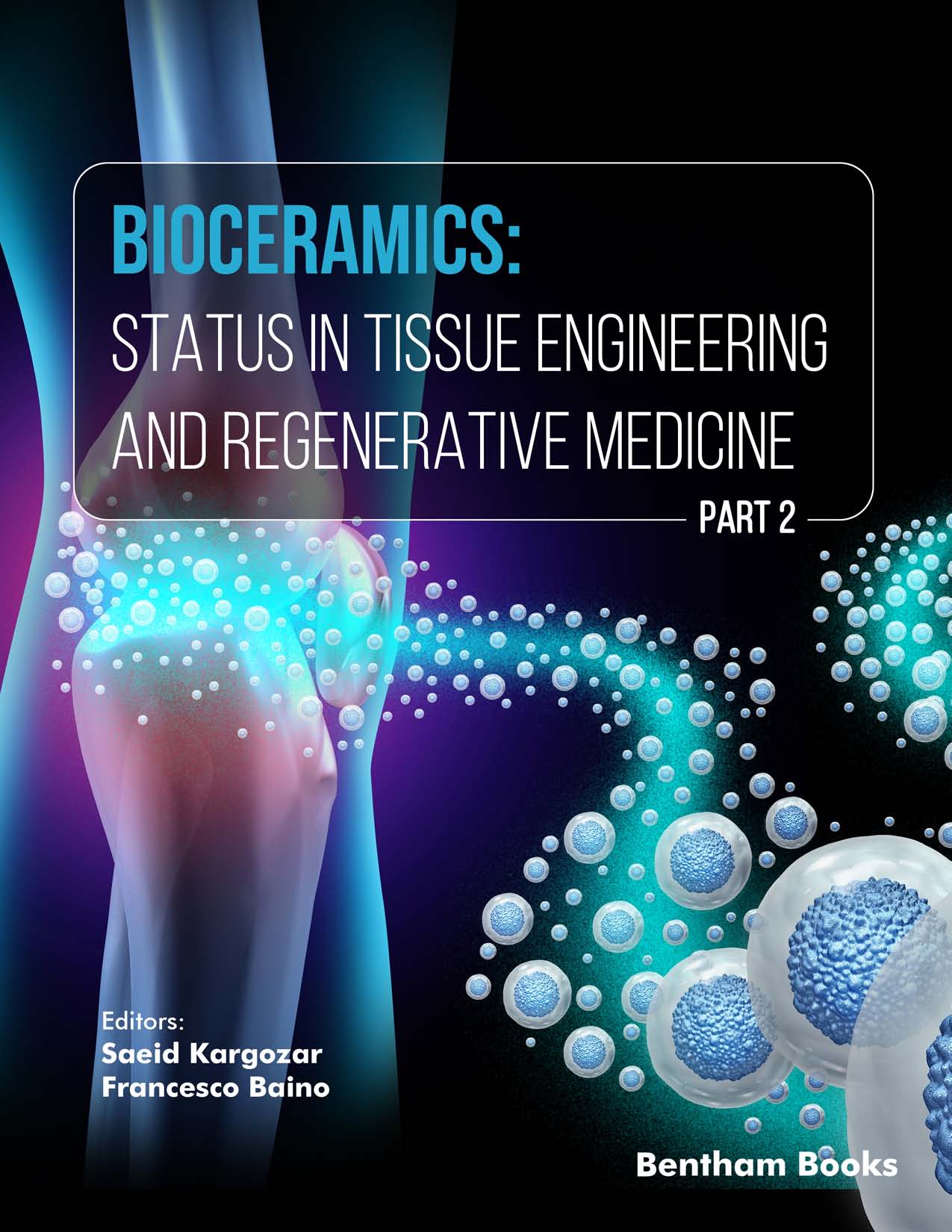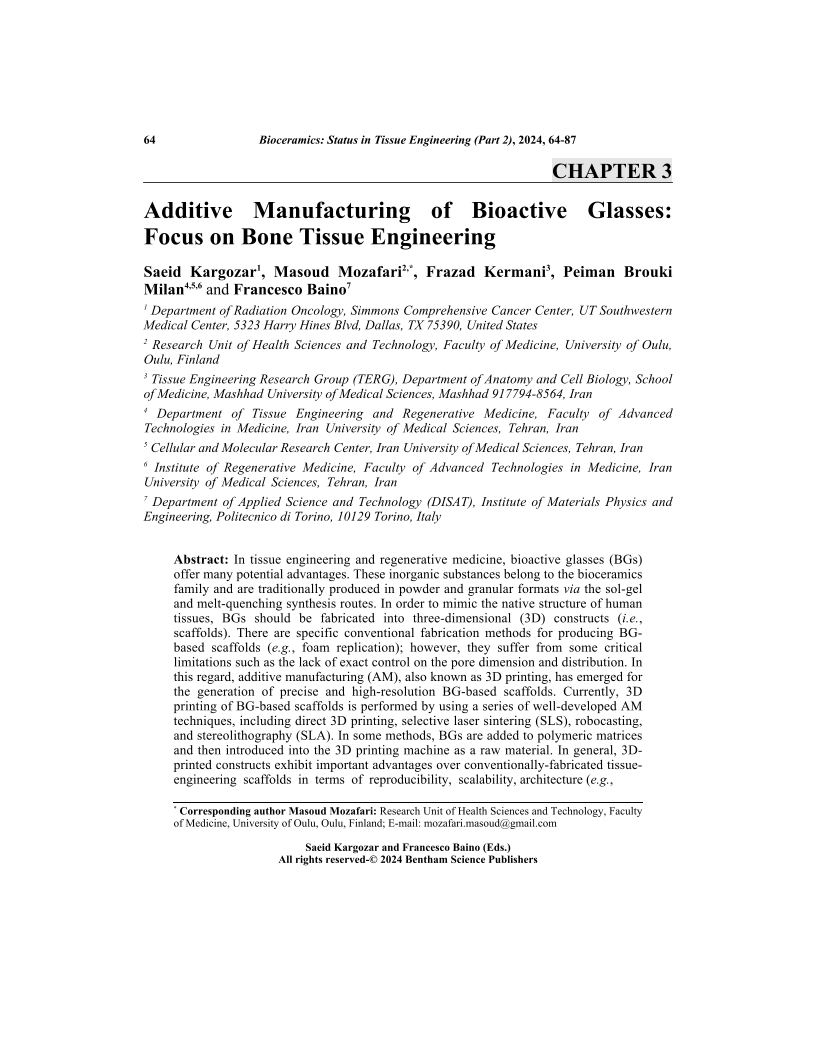Additive Manufacturing of Bioactive Glasses: Focus on Bone Tissue Engineering

- Authors: Saeid Kargozar1, Masoud Mozafari2, Frazad Kermani3, Peiman Brouki Milan4, Francesco Baino5
-
View Affiliations Hide Affiliations1 Department of Radiation Oncology, Simmons Comprehensive Cancer Center, UT Southwestern Medical Center, 5323 Harry Hines Blvd, Dallas, TX 75390, United States 2 Research Unit of Health Sciences and Technology, Faculty of Medicine, University of Oulu, Oulu, Finland 3 Tissue Engineering Research Group (TERG), Department of Anatomy and Cell Biology, School of Medicine, Mashhad University of Medical Sciences, Mashhad 917794 8564, Iran 4 Department of Tissue Engineering and Regenerative Medicine, Faculty of Advanced Technologies in Medicine, Iran University of Medical Sciences, Tehran, Iran 5 Department of Applied Science and Technology (DISAT), Institute of Materials Physics and Engineering, Politecnico di Torino, 10129 Torino, Italy
- Source: Bioceramics: Status in Tissue Engineering and Regenerative Medicine (Part 2) , pp 64-87
- Publication Date: December 2024
- Language: English
Additive Manufacturing of Bioactive Glasses: Focus on Bone Tissue Engineering, Page 1 of 1
< Previous page | Next page > /docserver/preview/fulltext/9789815313895/chapter-3-1.gif
In tissue engineering and regenerative medicine, bioactive glasses (BGs) offer many potential advantages. These inorganic substances belong to the bioceramics family and are traditionally produced in powder and granular formats via the sol-gel and melt-quenching synthesis routes. In order to mimic the native structure of human tissues, BGs should be fabricated into three-dimensional (3D) constructs (i.e., scaffolds). There are specific conventional fabrication methods for producing BGbased scaffolds (e.g., foam replication); however, they suffer from some critical limitations such as the lack of exact control on the pore dimension and distribution. In this regard, additive manufacturing (AM), also known as 3D printing, has emerged for the generation of precise and high-resolution BG-based scaffolds. Currently, 3D printing of BG-based scaffolds is performed by using a series of well-developed AM techniques, including direct 3D printing, selective laser sintering (SLS), robocasting, and stereolithography (SLA). In some methods, BGs are added to polymeric matrices and then introduced into the 3D printing machine as a raw material. In general, 3Dprinted constructs exhibit important advantages over conventionally-fabricated tissueengineering scaffolds in terms of reproducibility, scalability, architecture (e.g., controllable strut thickness, pore shape and size), and biomechanical properties. It is of significance that BGs can be simultaneously printed with mammalian cells (e.g., stem cells), known as 3D bioprinting. Still, some challenges (e.g., decreased cell viability) remain that should be addressed by conducting further research and proposing innovative solutions.
-
From This Site
/content/books/9789815313895.chapter-3dcterms_subject,pub_keyword-contentType:Journal -contentType:Figure -contentType:Table -contentType:SupplementaryData105

